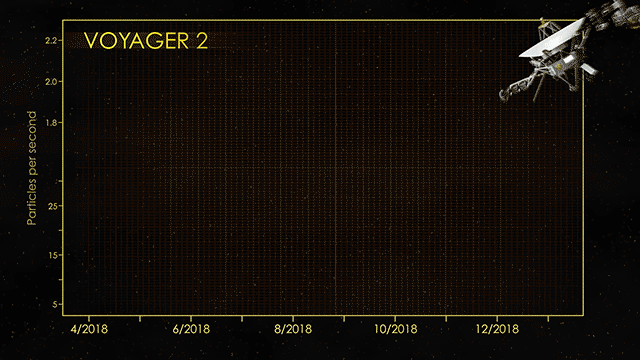Voyager 2, the multi-planetary exploratory probe launched in 1977, has finally entered interstellar space, some six years after its twin, Voyager 1, did the same. It’s now about 11 billion miles from Earth, the second-farthest-out human-made object in space.
Interstellar space starts where the sun’s “heliosphere” ends — the big ball of radiation and plasma in which the planets bathe and by which they are protected. Both Voyagers have instruments on board that monitor all this stuff, and both have shown a major dropoff in electrical and plasma activity, suggesting they’ve crossed over.
The exact border of interstellar space is a matter of debate, a great deal of which occurred while Voyager 1 was on the very edge and scientists were arguing whether it was out or not. A consensus was reached, however, and most agree that both probes have now left the heliosphere.
They have not, however, left the solar system, defined more or less by the extent of the Oort cloud, an enormous collection of dust and small objects caught in the sun’s gravity but just barely. Until the Voyagers leave that, in perhaps 30,000 years, they’re still technically in-system.
Interestingly, although Voyager 2 was the second to enter interstellar space, it was actually the first to launch. The risk of failure for these complex, ambitious probes was high enough that NASA felt it should build 2 and send them out one after another, and it so happened that Voyager 2 launched 16 days before Voyager 1. However, the latter’s trajectory caused it to exit the ecliptic (the flat disk in which most of the solar system’s objects are found) earlier and at a different angle.
That makes Voyager 2 NASA’s longest-running mission (though not the object in space for longest — early satellites are still floating around up there), and those working on it couldn’t be happier.
“I think we’re all happy and relieved that the Voyager probes have both operated long enough to make it past this milestone,” said Voyager project manager Suzanne Dodd at JPL, in a NASA news release. “This is what we’ve all been waiting for. Now we’re looking forward to what we’ll be able to learn from having both probes outside the heliopause.”
Both Voyagers should continue operating for at least a few more years; their power sources are likely to go out around 2025. At that point they’ll have been in space sending back data for nearly 50 years. Congratulations to the team and, really, to humanity, for doing something so amazing.
Voyager 2 joins its twin in interstellar space was first posted on https://techcrunch.com/gadgets/

No comments:
Post a Comment